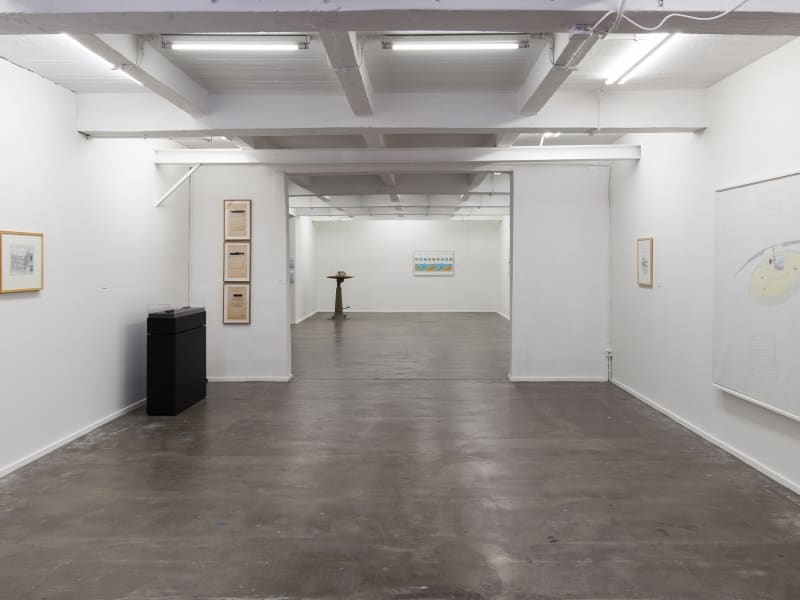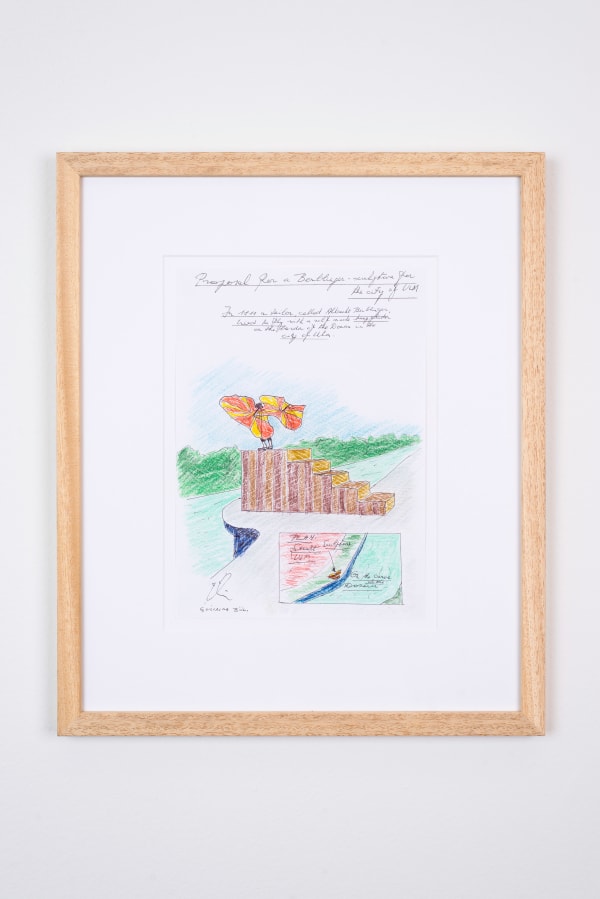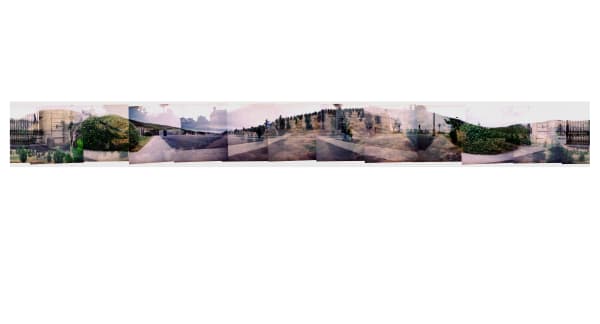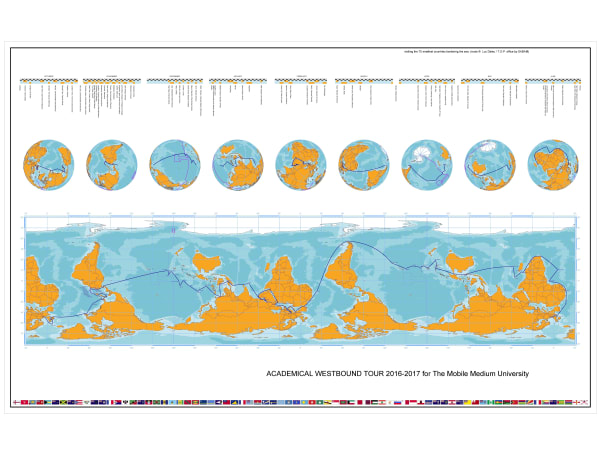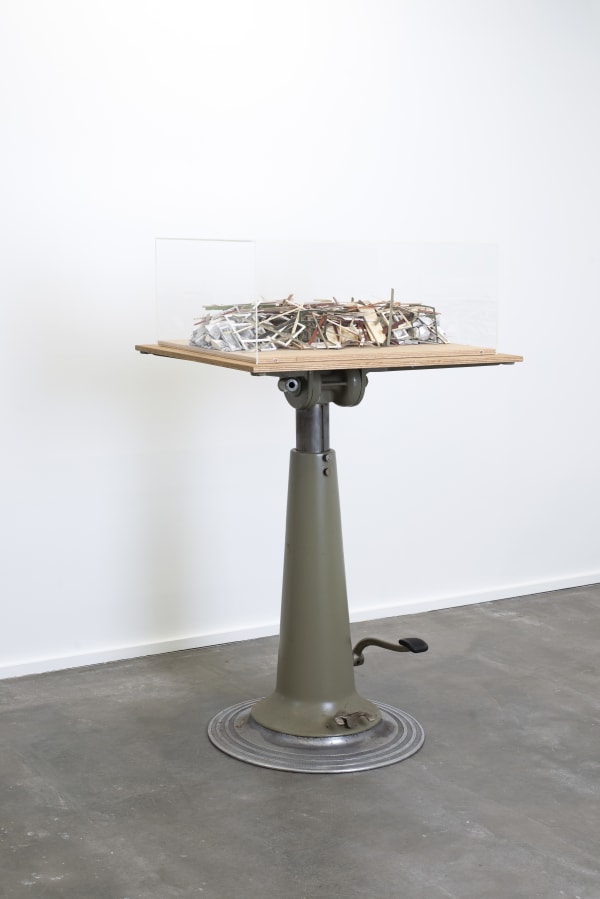Overview
KETELEER GALLERY is very pleased to present a new group show with Guillaume Bijl, Leo Copers, Luc Deleu and Panamarenko.
The exhibition focuses on 4 Belgian artists who have – each in their own imitable way – set a very particular tone for generations after them. Bijl (°1946. Antwerp), Copers (°1947. Ghent), Deleu (°1944. Duffel) and Panamarenko (1940 – 2019. Antwerp) could be considered new underdogs in an ever-accelerating world seemingly dominated by the young and the virtual. They are, however, the undeniable bedrock of our current visual art historical memory and understanding without whom the Belgian’s artworld would not have become what it is today. 4 exceptional artists who continue to inspire beginning artists, and continue to surprise seasoned art connaisseurs. Playing on this tension, the artist’s works are shown in the downstairs gallery space, alongside a solo exhibition by the young Rebekka Löffler (°1985. Freiburg im Breisgau, DE) on the ground floor, emphasising the gallery’s sense of dual responsibility to both emerging and established artists, and both its international and local aspirations.
Press release
A text by Nadia Bijl:
The oeuvre of Leo Copers has a deeply rooted socio-political and anarchistic dimension. The museum as an institute, but also the status and persona of the artist are repeatedly under scrutiny. But there’s also a striking duality to be found throughout Copers’ oeuvre: the tensions between beauty and horror, appearance and sincerity, death and life, science and alchemy are continuously explored. The artist explores the physical world; the four elements water, earth, air and fire, and continuously pushes the boundaries of these phenomena. By doing so, Copers commits to exposing the seemingly impossible and contradictory, creating a magical world, a universe with its own laws.
The ‘weapon’ is a recurrent motif, taking on different guises within various contexts. In the work Zonder Titel (1979) two butcher knives are presented on a pedestal, the tips of the knives almost touching. In the small space between the knives, an electrical spark is generated, flickering to the rhythm of mors code: sending out the s.o.s. signal. There’s a literal field of tension created; the work of art cries out for help, battling an internal struggle. But the work also alludes to famous art heists, which Copers – with his critical view on institutions – considers performances on their own. This work of art however, has the ability to defend itself against these kind of cunning thieves.
The work De roos en de pijl (1979-80) – executed as a video, a sculpture and a drawing – borders on the cliché: the rose, representing innocence and the good, is set in opposition to the arrow, representing masculinity and hostility. The video is the registration of a performance the artist did in 1979 in Ghent at the opening of an exhibition in the house of his painter friend, Robert Clique. A man enters the room, a black hood with looking holes covering his head. He’s carrying a bow and arrow, pointing it at a rose which is attached to the wall. The arrow misses the rose by ten centimeters. Luckily, the violent aren’t always successful…
Guillaume Bijl is known for his large-scale installations and realistic visual language. Bijl has been making his Installations since the 70’s: realistic decors made from found objects which represent different aspects of our western ‘civilisation’ and consumer society. Employing well-known stereotypes, he creates a kind of archeology of our times in a tragicomic, alienating way.
Bijl’s Composition Trouvée series is another important part of his oeuvre. These compositions are fragments, details from reality which look like they were taken directly from the antique or gift shop. The often kitschy looking works are much smaller than the installations and are always composed very meticulously. In this exhibition a striking Composition Trouvée from 2018 is on view: universally recognisable flickering LED signs meant to be used by horeca or shops, exclaiming words like ‘Welcome’, ‘Pizza’, ‘Phone’, ‘Nails’, ‘Tattoo’, ‘Pool’ and so on. This assemblage of LED signs represent fragments of the shop or window display of a hardware or lighting store. The work reflects contemporary phenomena of our multifarious (consumer) society, combined as a juxtaposition by the artist.
The exhibition also shows a work from the seventies which is exhibited here for the first time. The triptych Braakzak, Klootzak, Koffiezak (1976) connects wordplays to found objects, in this case coat pockets. This atypical work is one of the first ready-made works Bijl realised before he evolved to his highly realistic visual language.
In 1970 artist and architect Luc Deleu established ’T.O.P. office’ in Antwerp, a place from which he and his coworkers formulated visionary and radical projects. Deleu’s work is always socially engaged, anarchistic, democratic in the truest sense of the word but also humorist and laden with a strong ecological awareness. His practice starts from a global approach to viewing the world; the planet is a space ship in which Deleu develops a new statute for the public space.’Orbanism’ – derived from the Latin word for globe: orbis terrarium – offers the framework within which we can understand the works in this exhibition.
Mobile Medium University (1972) is a project which Deleu submitted for a competition for the new campus for the University of Antwerp, shortly after graduating. The project wasn’t a classic architectural proposal but involved students attending a university education while travelling the world on a recycled American aircraft carrier. According to Deleu, the fact that 2/3 of the world consists of water should lead to a more efficient use of this space; not for building but to create mobile infrastructures. In 2013-14 Deleu planned out 5 different voyages – for a total of 5 years – for the Mobile Medium University and translated these into a cartographic presentation, including the Academical Westbound Tour, 2017-2018.
Mobile Medium University (1972) is a project which Deleu submitted for a competition for the new campus for the University of Antwerp, shortly after graduating. The project wasn’t a classic architectural proposal but involved students attending a university education while travelling the world on a recycled American aircraft carrier. According to Deleu, the fact that 2/3 of the world consists of water should lead to a more efficient use of this space; not for building but to create mobile infrastructures. In 2013-14 Deleu planned out 5 different voyages – for a total of 5 years – for the Mobile Medium University and translated these into a cartographic presentation, including the Academical Westbound Tour, 2017-2018.
Between 1991 and 1993 the artists developed the cartographical project Reis rond de wereld in 80 dagen : Weber – Madrid – Weber. It’s a study on the possible ways of travelling around the globe with Madrid (Spain) and its antipode Weber (New-Zeeland) being the start and middle of the journey. In 1999 him and his wife Laurette Gillemot travelled the world in 72 days aboard the cargo ship Speybank. This trip resulted in the photocollage Weber, Ernslaw One ltd, over Madrid, Plaza de la Armeria (1999) in which the two antipodes are blended into one panoramic image. The same technique is used in the photocollage Academical Upgrade 2&3, Setenil (Spain) over Auckland (New-Zeeland), in which the pictures used were both made at the exact time of the solar solstice.
‘Art should be an adventure’, a catchy newspaper headline for an interview with Panamarenko conducted by the newspaper ‘De Tijd’ in 2001. A simple oneliner at first sight, but a fact in Panamarenko’s case. His unconventional way of thinking and working allowed him to approach the laws and rules of visual art and science in a free and inventive way.
In the rather atypical photography work Reis naar Egypte I and II (1990) the artist portrayed himself as an explorer. Panamarenko is on an exploration in Egypt, we see him diving in the ocean and on the back of a camel in the desert, solo this time, without machinery.
His well-known sculptures and scale models are a cross between art and science, between dreams and reality. Even though Panamarenko preferred not to elaborate on the functionality of his contraptions, his works of art undoubtedly function as a vehicle for our imagination. Our imagination is awakened in a similar way with these two photographical works which invite us to take an imaginary voyage, sharing in the joy which the artist must have felt while creating the pieces.
Installation Views
Works
